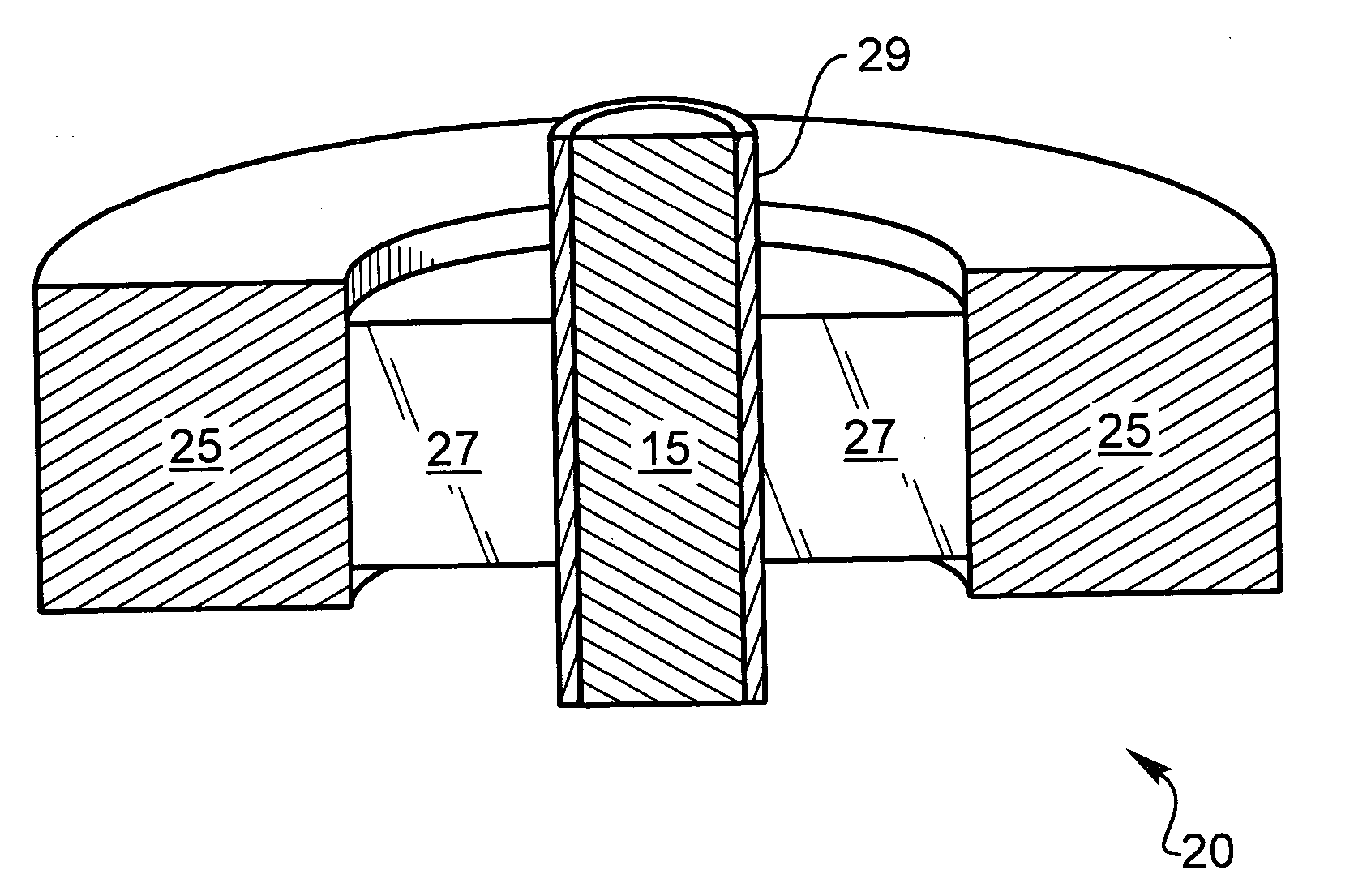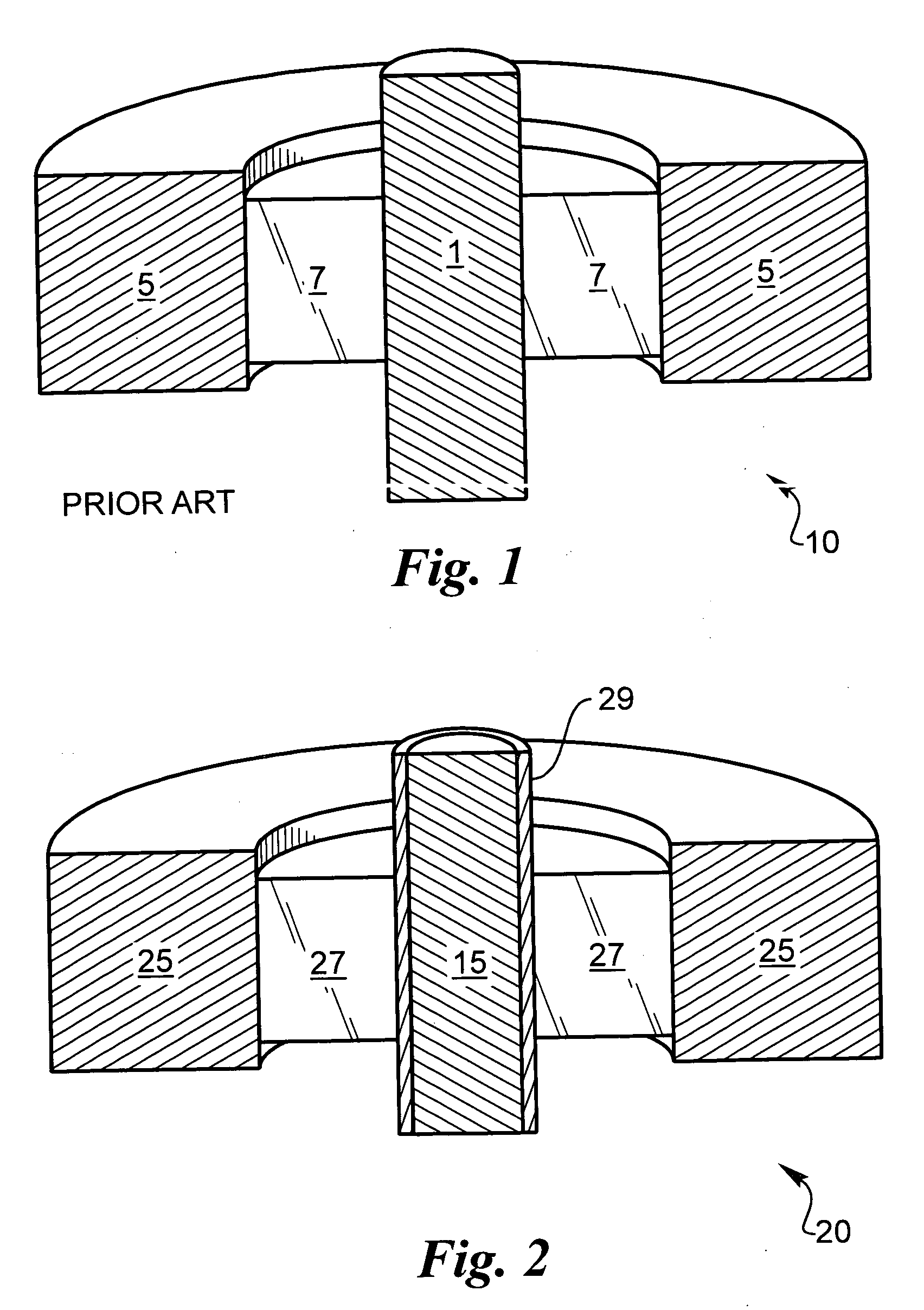Lithium-ion battery seal
a technology of lithium-ion batteries and seals, which is applied in the field of lithium-ion battery seals, can solve the problems of affecting destroying hardware components, and severely limiting the shelf life of cells, and achieves the effects of facilitating hermetic sealing, low thermal expansion coefficient, and no damage to sealing glass
- Summary
- Abstract
- Description
- Claims
- Application Information
AI Technical Summary
Benefits of technology
Problems solved by technology
Method used
Image
Examples
Embodiment Construction
[0039] The following description is of the best mode presently contemplated for carrying out the invention. This description is not to be taken in a limiting sense, but is made merely for the purpose of describing the general principles of the invention. The present invention is directed to improved techniques for generating a hermetic seal that is particularly rugged such that hermeticity can be maintained for extended periods in harsh environments, such as in implantable lithium-ion batteries.
[0040] Typical alkaline earth alumino-borates sealing glass compositions are listed in Table 1.
TABLE 1Alkaline Earth Alumino-Borate Sealing Glass Candidatesand Corrosion ResultsAfter U.S. Pat. No. 5,015,530Time toCorrosionCandidateFormula (mole %)(days)Babal-150 BaO—40 B2O3—10 Al2O3>14Babal-240 BaO—40 B2O3—20 Al2O3>30Babal-1C30 CaO—20 BaO—40 B2O3—Al2O345Babal-1D40 CaO—10 BaO—40 B2O3—10 Al2O390SrBAL-430 SrO-50 B2O3—10 Al2O370TA-2314.16 CaO—11.49 MgO—3.83 SrO—0.43-6La2O3—49.54 SiO2—12.98 Al2...
PUM
| Property | Measurement | Unit |
|---|---|---|
| Fraction | aaaaa | aaaaa |
| Fraction | aaaaa | aaaaa |
| Time | aaaaa | aaaaa |
Abstract
Description
Claims
Application Information
 Login to View More
Login to View More - R&D
- Intellectual Property
- Life Sciences
- Materials
- Tech Scout
- Unparalleled Data Quality
- Higher Quality Content
- 60% Fewer Hallucinations
Browse by: Latest US Patents, China's latest patents, Technical Efficacy Thesaurus, Application Domain, Technology Topic, Popular Technical Reports.
© 2025 PatSnap. All rights reserved.Legal|Privacy policy|Modern Slavery Act Transparency Statement|Sitemap|About US| Contact US: help@patsnap.com



